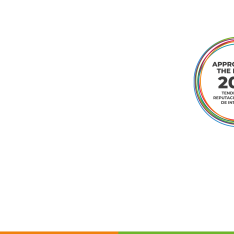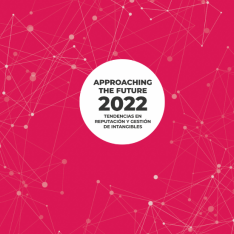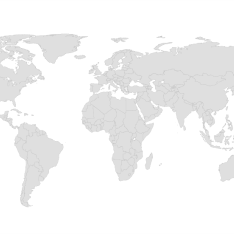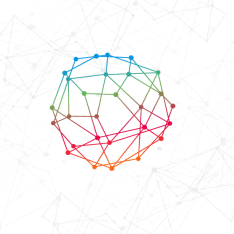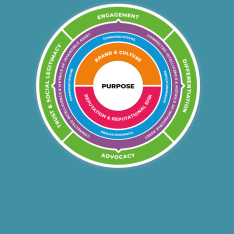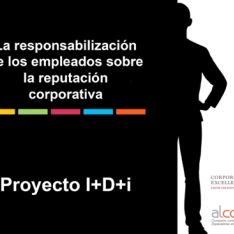Loading...
- Agenda 2030 & ODS (13)
- Alineamiento y Cultura Corporativa (27)
- Analytics & Big Data (2)
- Bienestar y Engagement (4)
- Chief Communications Officer (18)
- Co-Creación (2)
- Comunicación Externa (15)
- Comunicación Política (1)
- Consumidores (6)
- COVID-19 (6)
- Digitalización (15)
- Diplomacia Corporativa (2)
- Diversidad & Inclusión (8)
- Empleados (14)
- Empresa Con Futuro (6)
- Estrategia (24)
- Ética (11)
- Fake News y Desinformación (1)
- Geopolítica (2)
- Global Issues (13)
- Gobierno Corporativo (13)
- Indicadores No Financieros (4)
- Innovación (10)
- Internacionalización (2)
- IA, Metaverso y Nuevas Tecnologías (1)
- Gestión De La Reputación (1)
- Liderazgo (19)
- Lobby (2)
- Marca Corporativa (28)
- Marketing (1)
- Medios Sociales (2)
- Propósito & Valores (28)
- Rankings & Premios (1)
- Reputación Del CEO (5)
- Reputación País (1)
- Reporting No Financiero (3)
- Riesgo Reputacional (17)
- Sostenibilidad & Responsabilidad Social (23)
- Stakeholder Engagement (76)
- Storytelling & Narrativa (5)
- Tendencias (17)
- Valoración De Los Intangibles (4)
- Comunicación Interna (20)
- Transparencia (12)
Categories
Published by Unai Admin
18/07/2025
Categories
Categories
- Alineamiento y cultura corporativa
- Estrategia
- Sostenibilidad & Responsabilidad Social
- Tendencias
- Comunicación Interna
- Global Issues
- Diversidad & Inclusión
- Digitalización
- Corporate Excellence
- Propósito & Valores
- Stakeholder engagement
- Liderazgo
- Riesgo Reputacional
- Gobierno Corporativo
- Chief Communications Officer
- Empresa con Futuro
- Top ideas fuerza
- Transparencia
- Agenda 2030 & ODS
- Comunicación Externa
- Marca Corporativa
- Reputación & Riesgos Reputacionales
Categories
- Alineamiento y cultura corporativa
- Estrategia
- Vídeos
- Approaching the Future
- Sostenibilidad & Responsabilidad Social
- Tendencias
- Comunicación Interna
- Global Issues
- Diversidad & Inclusión
- Digitalización
- Corporate Excellence
- Propósito & Valores
- Stakeholder engagement
- Liderazgo
- Riesgo Reputacional
- Gobierno Corporativo
- Chief Communications Officer
- Empresa con Futuro
- Transparencia
- Agenda 2030 & ODS
- Comunicación Externa
- Marca Corporativa
- Reputación & Riesgos Reputacionales
Categories
- Alineamiento y cultura corporativa
- Estrategia
- Vídeos
- Approaching the Future
- Sostenibilidad & Responsabilidad Social
- Tendencias
- Empleados
- Comunicación Interna
- Global Issues
- Diversidad & Inclusión
- Digitalización
- Corporate Excellence
- Propósito & Valores
- Stakeholder engagement
- Liderazgo
- Riesgo Reputacional
- Gobierno Corporativo
- Chief Communications Officer
- Transparencia
- Agenda 2030 & ODS
- Comunicación Externa
- Marca Corporativa
- Reputación & Riesgos Reputacionales
Categories
- Alineamiento y cultura corporativa
- Estrategia
- Approaching the Future
- Sostenibilidad & Responsabilidad Social
- Tendencias
- Comunicación Interna
- Estudios & Informes
- Global Issues
- Diversidad & Inclusión
- Corporate Excellence
- Propósito & Valores
- Stakeholder engagement
- Liderazgo
- Ética
- Riesgo Reputacional
- Reporting no financiero
- Gobierno Corporativo
- Chief Communications Officer
- Empresa con Futuro
- Diplomacia Corporativa
- Transparencia
- Agenda 2030 & ODS
- Comunicación Externa
- Marca Corporativa
- Reputación & Riesgos Reputacionales
Categories
- Alineamiento y cultura corporativa
- Estrategia
- Approaching the Future
- Sostenibilidad & Responsabilidad Social
- Tendencias
- Comunicación Interna
- Estudios & Informes
- Global Issues
- Diversidad & Inclusión
- Corporate Excellence
- Propósito & Valores
- Stakeholder engagement
- Liderazgo
- Riesgo Reputacional
- Gobierno Corporativo
- Chief Communications Officer
- Innovación
- Empresa con Futuro
- Transparencia
- Agenda 2030 & ODS
- Comunicación Externa
- Marca Corporativa
- Reputación & Riesgos Reputacionales
Categories
- Alineamiento y cultura corporativa
- Estrategia
- Approaching the Future
- Sostenibilidad & Responsabilidad Social
- Tendencias
- Comunicación Interna
- Global Issues
- Diversidad & Inclusión
- Digitalización
- Corporate Excellence
- Propósito & Valores
- Stakeholder engagement
- Liderazgo
- Riesgo Reputacional
- Gobierno Corporativo
- Chief Communications Officer
- Top ideas fuerza
- Transparencia
- Agenda 2030 & ODS
- Comunicación Externa
- Marca Corporativa
- Reputación & Riesgos Reputacionales
Categories
- COVID-19
- Estrategia
- Vídeos
- Approaching the Future
- Sostenibilidad & Responsabilidad Social
- Tendencias
- Consumidores
- Global Issues
- Diversidad & Inclusión
- Digitalización
- Corporate Excellence
- Propósito & Valores
- Stakeholder engagement
- Riesgo Reputacional
- Gobierno Corporativo
- Innovación
- Geopolítica
- Transparencia
- Analytics & Big Data
- Agenda 2030 & ODS
- Reputación & Riesgos Reputacionales
Published by Unai Admin
25/07/2025
Categories
- COVID-19
- Fake news y desinformación
- Estrategia
- Approaching the Future
- Sostenibilidad & Responsabilidad Social
- Tendencias
- Estudios & Informes
- Digitalización
- Corporate Excellence
- Rankings & Premios
- Propósito & Valores
- Stakeholder engagement
- Liderazgo
- Riesgo Reputacional
- Gobierno Corporativo
- Innovación
- Analytics & Big Data
- Agenda 2030 & ODS
- Marca Corporativa
- Reputación & Riesgos Reputacionales
Categories
- COVID-19
- Estrategia
- Sostenibilidad & Responsabilidad Social
- Tendencias
- Comunicación Interna
- Estudios & Informes
- Global Issues
- Digitalización
- Corporate Excellence
- Propósito & Valores
- Stakeholder engagement
- Liderazgo
- Ética
- Riesgo Reputacional
- Innovación
- Agenda 2030 & ODS
- Reputación & Riesgos Reputacionales
Categories
Categories
- Alineamiento y cultura corporativa
- COVID-19
- Estrategia
- Approaching the Future
- Sostenibilidad & Responsabilidad Social
- Comunicación Interna
- Consumidores
- Insights
- Digitalización
- Corporate Excellence
- Reputación del CEO
- Lobby
- Stakeholder engagement
- Ética
- Riesgo Reputacional
- Transparencia
- Marketing
- Co-creación
- Comunicación Externa
- Marca Corporativa
- Reputación & Riesgos Reputacionales
Published by Unai Admin
18/07/2025
Categories
Published by Unai Admin
18/07/2025
Categories
- Alineamiento y cultura corporativa
- Valoración de los intangibles
- Estrategia
- Comunicación
- Sostenibilidad & Responsabilidad Social
- Empleados
- Corporate Excellence
- Propósito & Valores
- Stakeholder engagement
- Liderazgo
- Ética
- Riesgo Reputacional
- Gobierno Corporativo
- Chief Communications Officer
- Innovación
- Noticias
- Diplomacia Corporativa
- Comunicación Externa
- Marca Corporativa
Categories
Categories
Published by Unai Admin
18/07/2025
Categories
- COVID-19
- Valoración de los intangibles
- Approaching the Future
- Sostenibilidad & Responsabilidad Social
- Tendencias
- Empleados
- Comunicación Interna
- Consumidores
- Global Issues
- Corporate Excellence
- Reputación del CEO
- Conferencias & Talleres
- Propósito & Valores
- Stakeholder engagement
- Liderazgo
- Ética
- Riesgo Reputacional
- Reporting no financiero
- Transparencia
- Medios Sociales
- Agenda 2030 & ODS
- Comunicación Externa
- Marca Corporativa
- Reputación & Riesgos Reputacionales
Tags
- tendencias
- reputación
- intangibles
- comunicación
- sostenibilidad
- marca
- ética
- trasparencia
- covid-19
- contexto global
- approaching
- future
- gestión de intangibles de la universidad de málaga
- uma
- punto de fuga
- cátedra de métricas
- management
- university of malaga
- corporate excellence centre
- reputation leadership
- here you will find all the materials of the report
- chair of intangibles metrics
Categories
Published by Unai Admin
17/07/2025
Categories
Categories
Published by Unai Admin
17/07/2025
Categories
Categories
Published by Unai Admin
18/07/2025
Página
of 3



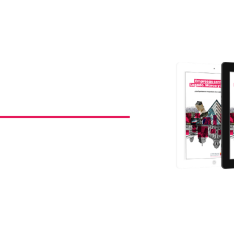


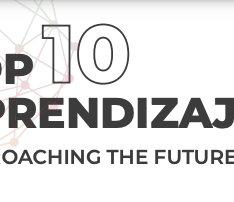
![Approaching the Future 2023 - FULL REPORT [★ by subscription] Approaching the Future 2023 - FULL REPORT [★ by subscription]](https://servicios.corporateexcellence.org/imagenes/Documentos/imgsem/75/751d/751d4f0d-db55-f503-fb90-4f367757f855/8ffd4e39-6c7e-a161-a0c2-dcde71d135a5_234.png)
